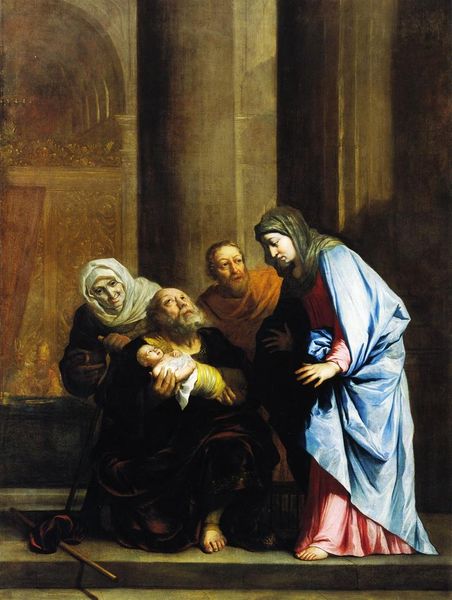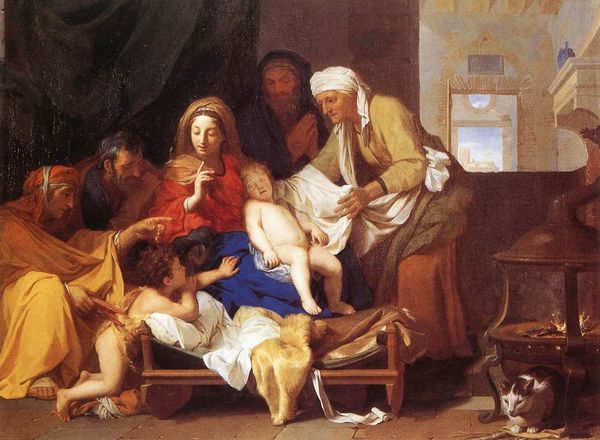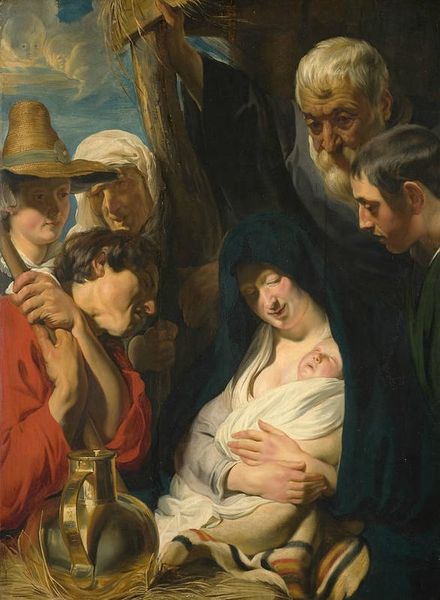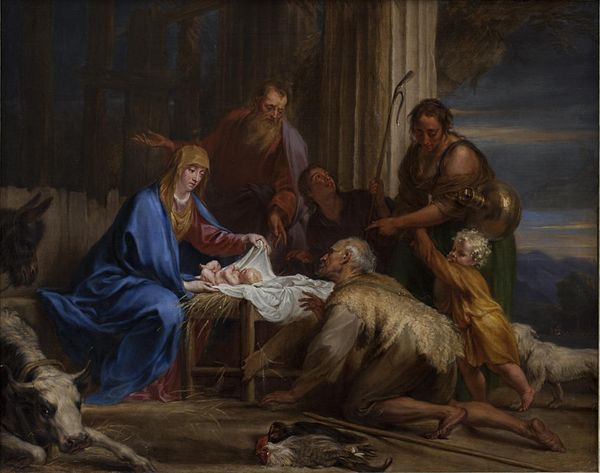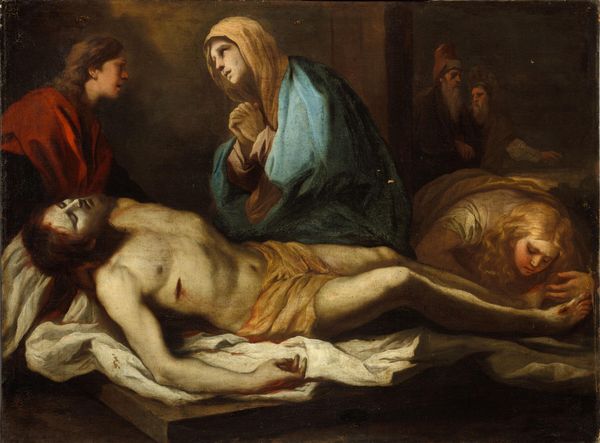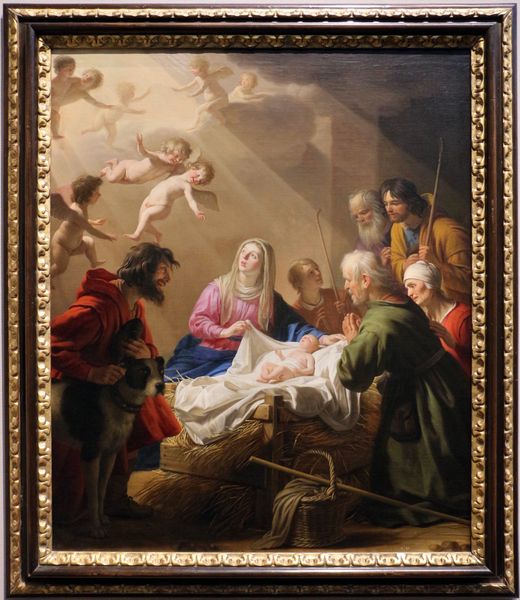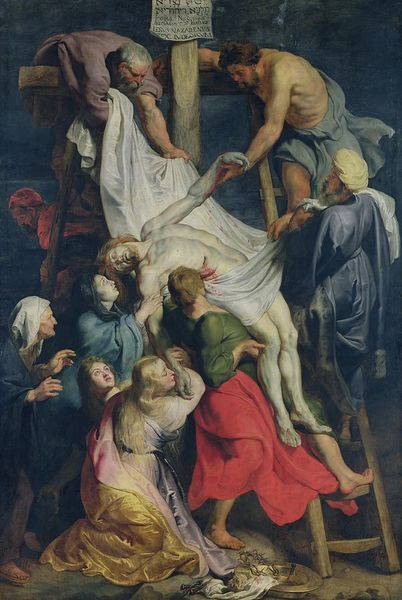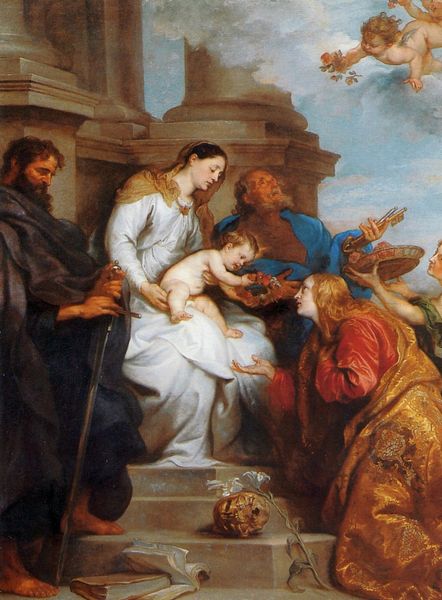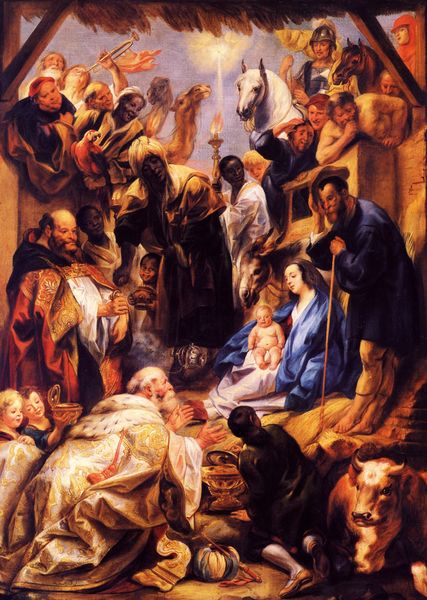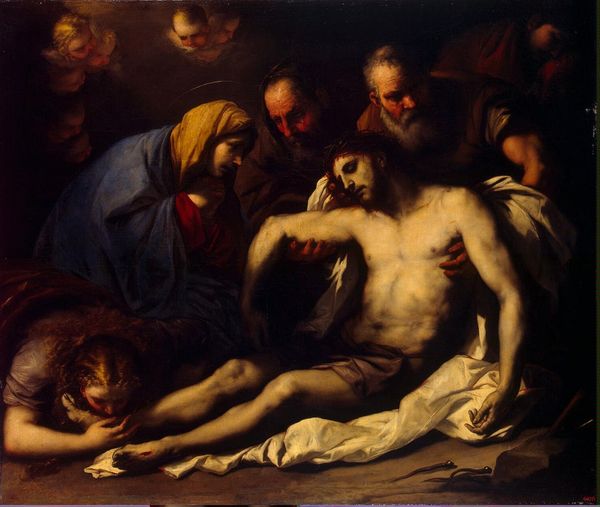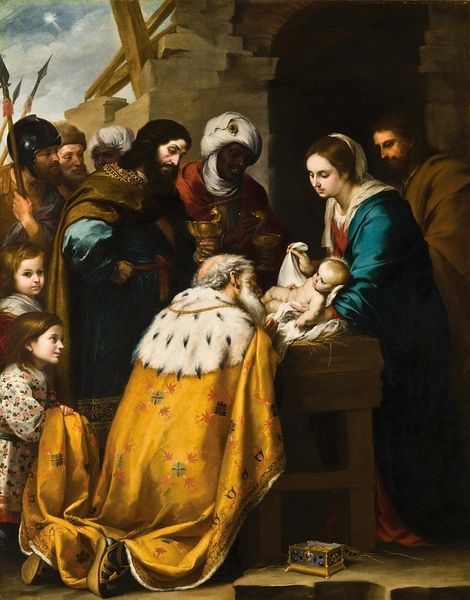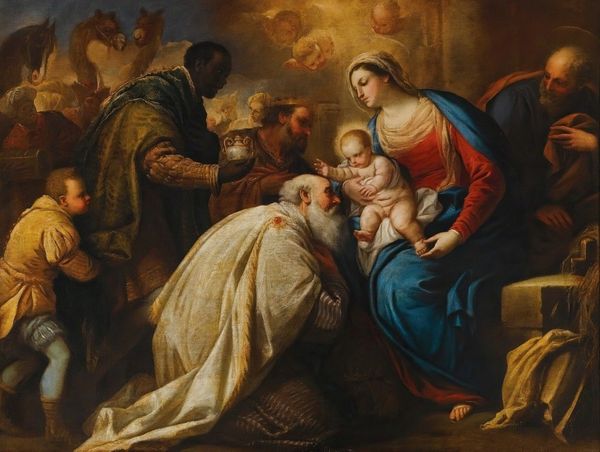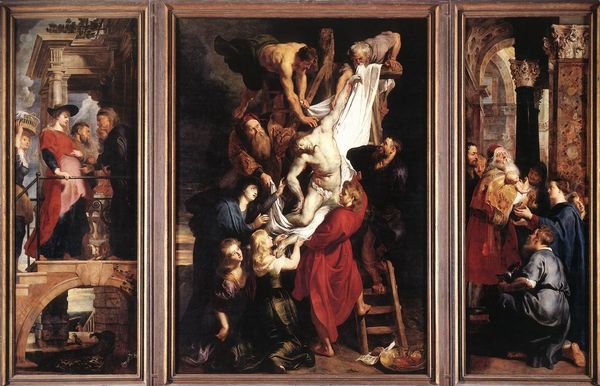
painting, oil-paint
#
portrait
#
allegory
#
baroque
#
painting
#
oil-paint
#
figuration
#
11_renaissance
#
christianity
#
genre-painting
#
history-painting
#
christ
Copyright: Public domain
Curator: Oh, the drama! The first thing that strikes me about this “Nativity” is its intense theatricality—everyone is *performing* wonder. It's magnificent, isn't it? Editor: Indeed! What Tiepolo accomplishes in this 1732 painting, currently displayed in the Basilica di San Marco, Venice, exemplifies Baroque art's engagement with religious subject matter and spectacle. Observe how strategically light illuminates certain areas in ways designed to draw in the devout. Curator: Exactly! It's pure Venetian stagecraft. See the angelic light bathing the Christ child, draped so casually, and then there's Mary. She is such an emotionally open figure in prayer and awe. It is the kind of visual storytelling meant to bypass the brain, hitting the heart right away. Editor: Her elevated gaze is particularly key to accessing that sentiment, and remember who the audiences of these paintings were in the eighteenth century. We're in the age of European empires, the Church wielding considerable political power... Tiepolo was canny, using aesthetics to support systems. Curator: But it’s more than just canny; there's genuine feeling, or the aspiration toward genuine feeling. Notice how everyone's eyes meet. I wonder if he experienced an event and used those personal elements to touch the scene. Editor: Possibly, but this also becomes a type. Tiepolo established an atelier producing works that glorified families and certain Italian ideals. That institutional element, creating paintings for an organization and the upper class, can influence the artist. These Nativity images were important instruments that helped to maintain public engagement, faith, and control. Curator: Even so, to me, there is a vulnerability beneath the grandeur, almost a plea. Look at that slightly awkward positioning of baby Jesus and that random face next to Mary. It reveals something profoundly human within the divine story. Editor: A human element emerges precisely because these are Baroque-era oil paintings, commissioned to convey messages about family and spirituality as institutions! Understanding those structures contextualizes every intention behind the use of pigment. Curator: You provide some solid points for appreciating context! And it makes me wonder where this search to capture feeling within formal elements is. I guess art's most charming trick is to evoke through form. Editor: Certainly, whether that form echoes within those Venetian hallways, political systems, or our own souls, understanding its impact in different arenas, that is how art becomes vital.
Comments
No comments
Be the first to comment and join the conversation on the ultimate creative platform.
